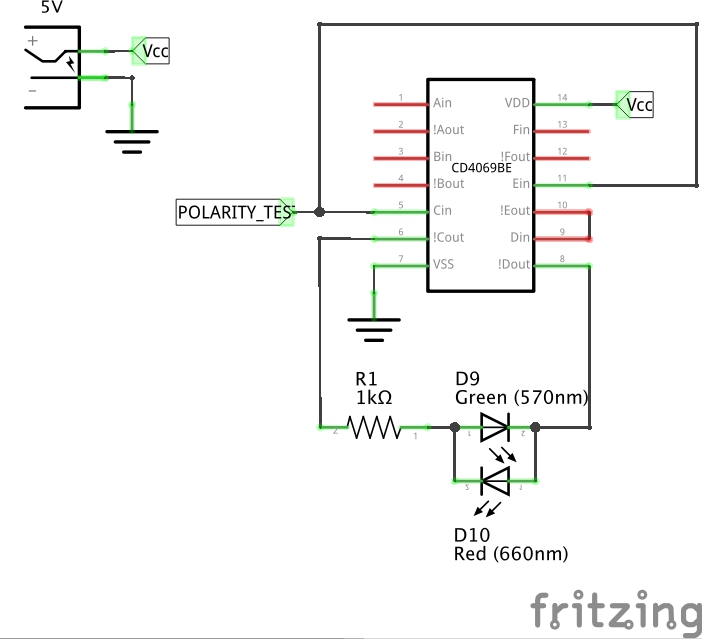LEAP#184 Adjustable Pulse Generator
Yet another variation on the basic 555 timer astable oscillator to allow a wide range of frequency and duty cycle
adjustments. It's similar to the circuit used in
kits like this.
As you can see from the schematic, it's the combination of pot and capacitor selector that produce the wide range of
oscillator control:
But the challenge with the classic 555 astable circuit is trying to hold frequency or duty cycle constant while adjusting the other. This circuit doesn't solve that problem, but for something different, I plotted the functions with WolframAlpha. If you correlate the two graphs below, you can see the severe penalty you pay in terms of duty cycle when attempting to push for maximum frequency. It definitely is a case of trying to find the best compromise for your application.
As always, all notes, schematics and code are in the Little Arduino Projects repo on GitHub, including live links to WolframAlpha to reproduce these plots.
Frequency for all values of R1, R2 (C=1µF)
Duty Cycle for all values of R1, R2 (C=1µF)
read more and comment..
LEAP#183 Polarity Testing
A simple polarity test for uses a series of inverters. The input signal is pumped into two parallel inverter
chains:
- a single inverter
- a series of two inverters
I used a venerable CD4069 for a quick test, although any inverter (matched to the voltage of the signal) will do. The result of the polarity test is displayed with a pair of LEDs reversed in parallel.
As always, all notes, schematics and code are in the Little Arduino Projects repo on GitHub.
read more and comment..
LEAP#182 Building a Bench Power Supply
I've wanted a variable mains-powered power supply for a while, so when I found
this kit for a reasonable price I decided to give it a go. Some things that attracted me:
- 220V/110V mains-powered
- continuously adjustable output voltage
- isolated output
- nice acrylic case
- built-in LED voltmeter
The kit and PCB comes with a few "valued-added features" unrelated to the power supply function (CD4069 square-wave generator, externally-triggered piezo buzzer, externally-triggered polarity tester), but I decided to leave those out of the build.
I also enjoyed investigating and old-school transformer-based power supply. These are getting rare .. it's hard to even find a 220/12 transformer for less than the price of the kit these days, and then they are mostly used/refurbished.
How does it perform? Nice! No smoke on power-up, but a few things to note and/or improve. And I'm sure it wouldn't pass a safety certification, so don't go building one like this for friends.
As always, all notes, schematics and code are in the Little Arduino Projects repo on GitHub.
read more and comment..
LEAP#181 Voltmeter Modules
Voltmeter modules are a very convenient way of adding voltage display to any project, because they require no
supporting circuitry or microcontrollers.
There are two and three wire modules in the market. Two-wire modules are the simplest (and generally cheapest). For
most applications where a simple readout of a power supply is required, they are most convenient since a separate power
supply connection is not required. It does mean of course that the meter draws current from the circuit under test, and
will only work down to a certain voltage (usually ~4.5V).
For more precision measurement, the three-wire modules are best as they present relatively high input impedance (>
100kΩ), and can measure voltages all the way down to 0. As an example, Adafruit have this 3-wire module in their catalogue, but they are widely available from
most online sellers.
I recently received a 3-wire module as part of a kit and put it to the test. Using my DMM as a reference, it appears
accuracy is within 40mV, good enough for general purposes.
As always, all
notes, schematics and code are in the Little Arduino Projects repo on GitHub.
read more and comment..





